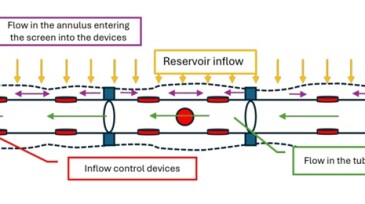Testing page for app
-
The SPE Benin City Section celebrated its 35th section anniversary in July by combining its annual general meeting with a dinner and awards night.
-
This paper compares various drainage strategies and well completion configurations on the installation of inflow control technology by considering energy efficiency.
-
SponsoredIn oil and gas operations, every decision counts. For more than 2 decades, SiteCom has been the trusted digital backbone for well operations worldwide, driving insight, collaboration, and efficiency.
-
SPE technical papers synopsized in each monthly issue of JPT are available for download for SPE members for 2 months.
-
The capability of modern wellbore surveying to increase asset value through improved subsurface modeling and completion-equipment placement is being overlooked by managers of operating companies.
-
This study presents a novel hybrid approach to enhance fraud detection in scanned financial documents.
-
This paper describes a decision-support system that integrates field data, system specifications, and simulation tools to quantify system performance, forecast operational challenges, and evaluate the effect of system modifications in water management.
-
The papers featured here highlight how artificial intelligence, carbon management, and risk analytics are redefining the way companies assess and manage their assets in increasingly complex environments.
-
This paper provides insight into existing tools, methodologies, and processes that can help any capital project or organization improve predictability of outcome while mitigating risks and exploiting opportunities effectively.
-
This paper presents a study of trapped-torque incidents during drillpipe connection, highlighting contributing factors and root causes and proposing prevention and mitigation measures for these transient events.










